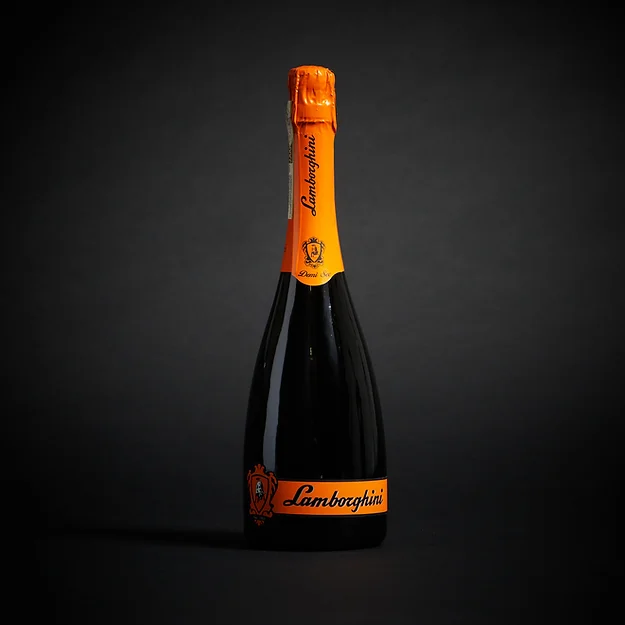
Use the quick search bar.
Place your order online.
Pay on delivery.
DEMI SEC, Prosecco Superiore D.O.C.G. Millesimato, Lamborghini Wines
|
Category: |
FOOD & WINE , LAMBORGHINI 1968, SPARKLING |
|
SKU: |
demi sec prosecco |
|
Price: |
€25.00 |
|
{{variant.name}}:
|
{{opt.name}}
{{opt.name}}
|
Demi Sec Prosecco Superiore D.O.C.G. Millesimato
PRODUCT INFO
FORMAT 750ml
AREA OF ORIGIN Hills of Valdobbiadene
VARIETY: Glera (formerly known as Prosecco)
TRAINING SYSTEM Autochthonous called modified capuccina
YIELD KG OF GRAPES PER HA: 13,000 KG
HARVEST PERIOD: From 15th September to 30th September
VINIFICATION In white by soft pressing
PRIMARY FERMENTATION: At controlled temperature and with selected yeasts
SPUMA: 25 - 30 days
AGING: From 1 to 3 months
ALCOHOL: 11% Vol.
RESIDUAL SUGAR: 40.00 g / l
TOTAL ACIDITY: 6.00 g / l
COLOR: Straw yellow
PERLAGE: Fine and persistent
BOUQUET: fruity, elegant aromatic
TASTE: Fresh, sweet, with honeyed veins
SERVING TEMPERATURE: 6 - 8 ° C
SPARKLING METHOD Martinotti - Charmat
Demi-Sec is the term used for sparkling wines that have between 32 and 50 grams per liter of residual sugar.
Demi Sec is a French wine term meaning “half-dry”.
Demi-sec sparkling wines are typically slightly to medium sweet.
Prosecco and Champagne are both bubbly with refreshing high acidity. Like Champagne, which can only come from the Champagne region of France, the name prosecco is protected by European law for wines made in the authorized production zone of the Prosecco DOC.
Learn about the key differences between these two sparklers.
How to Serve Prosecco
Prosecco should be served ice cold. It can be served on its own as an apéritif or digestif, but is also a popular component of cocktails including the spritz, the mimosa (made with prosecco and orange juice), and the bellini (made with prosecco and white peach purée).
Prosecco is at its best when consumed immediately and not aged.
Prosecco is easy to pair with food as long as you keep its sweetness in mind. Relatively dry brut proseccos go well with salty food such as:
1. Parmesan cheese
2. Prosciutto-wrapped melon
3. Fritto misto di mare
4. Frittata or quiche
The additional sugar in extra dry Proseccos make them an ideal pairing for Thai cuisine, where chili heat is matched with a sweet element, like in pad thai, green papaya salad, or red curry.
The sweetest proseccos are delicious with dessert, especially baked fruit pastries, cookies, cakes with fresh fruit, and fried desserts with pastry cream or ice cream filling.
1. Production method: Most prosecco is carbonated using the Charmat method, where the second fermentation occurs in a closed tank before the wine is bottled. Champagne is made using the méthode Champenoise, or traditional method. This technique uses a second fermentation in individual bottles as well as lees aging (aging on spent yeast) to give the wine strong bubbles and bready aromas.
2. Grapes used: Prosecco is made from at least 85% glera, which is a fruity, aromatic white grape. Other grapes are allowed in smaller quantities, including chardonnay and pinot noir, two of the main grapes of Champagne. Champagne is based on these two grapes, plus the red grape pinot meunier, and does not include glera.
3. Sweetness: Most prosecco is extra dry or brut, styles which have discernible sweetness. Champagne tends to be drier, with extra brut being a more common level of dosage. Those looking for bone dry wine should try brut nature (zero dosage) Champagne.
Prosecco gets its name from the village of Prosecco in Friuli in northeastern Italy. Wine from the area has been called “prosecco”or some variation for at least 400 years. Early proseccos were ancestral method sparkling wines that were sweet and low in alcohol, similar to Asti, another popular sparkling Italian wine.
The Charmat method, invented around the turn of the twentieth century, allowed prosecco producers to make more consistent sparkling wine on a larger scale than before. As the technology was adopted, prosecco production went up and quality improved dramatically.
Glera, the main grape used to make prosecco, was called “prosecco” until 2009, when it was renamed as part of the creation of the Prosecco DOC. The DOC area was significantly larger than the classic production zone for the wines, and critics were worried that quality would suffer. For this reason, some areas in the classic production zone were elevated to DOCG status.
International prosecco consumption has grown rapidly since the introduction of the Prosecco DOC, making it one of the wine world’s biggest success stories.



